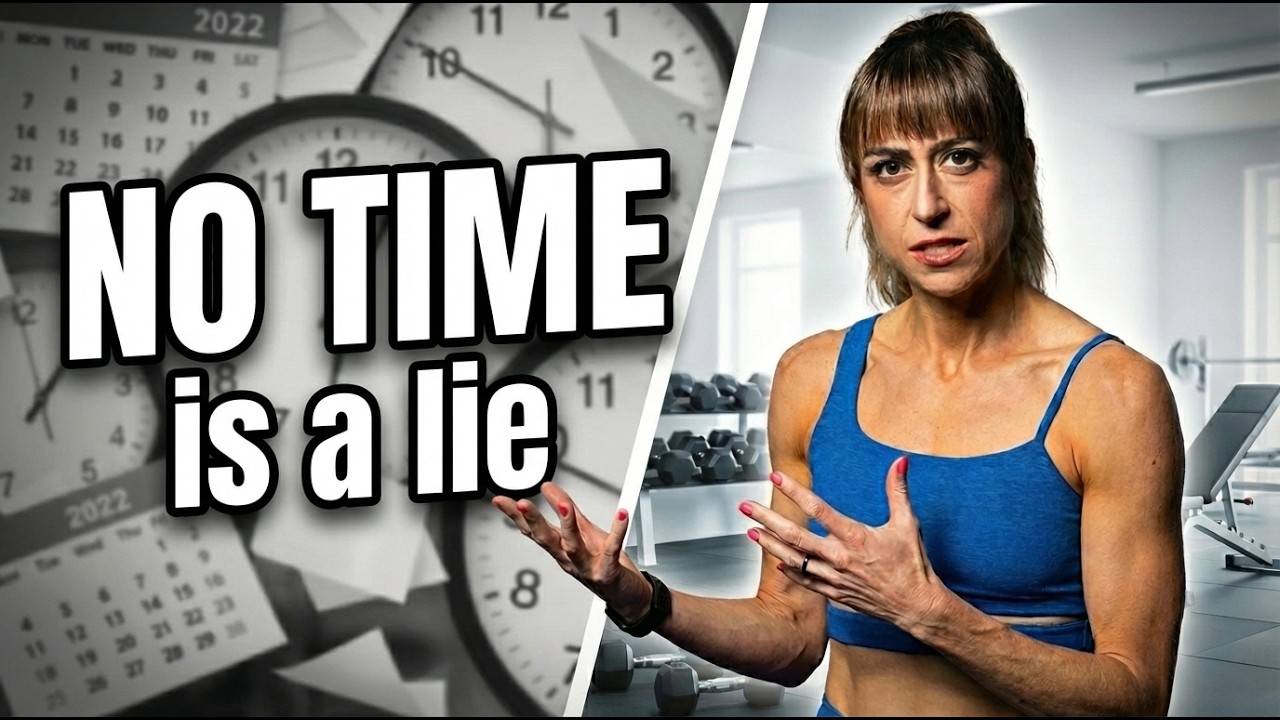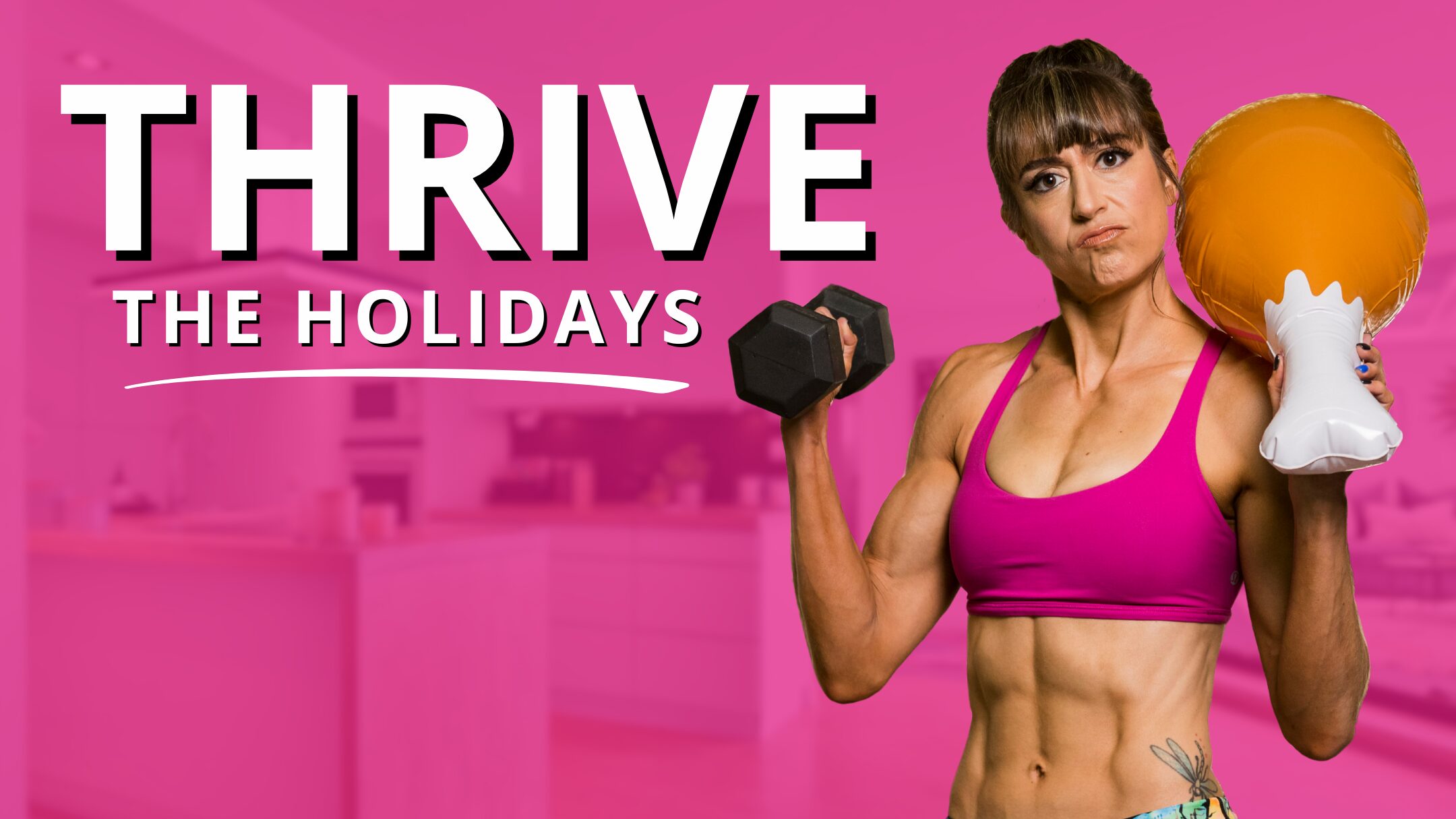We all want something that helps us get better results faster.
It’s why, no matter how much we know, fad diets and extreme workout routines have an allure.
But often, it is really small 1% improvements and tweaks to what we are currently doing that make the difference.
That’s why I want to share this simple training technique that can accelerate your results.
And you can implement it today without really making any changes to your schedule or workout designs.
It’s adding in an Eccentric Focus to exercises!
In this video I’ll discuss what focusing on the eccentric means, how it can lead to better results faster and how you can include it in your current training routine to accelerate your strength and muscle gains!
And this technique can help you build muscle and strength whether you’re training in a full gym or using only bodyweight exercises!

So First…What Does Focusing On The Eccentric Mean?
Let’s get a little nerdy here…
The eccentric is one of 3 muscle contractions – concentric, isometric and eccentric.
Concentric is the shortening of the muscle-tendon complex.
Isometric is where length remains constant with tension (or a hold). S
And eccentric is the lengthening of the muscle-tendon complex.
To focus on the eccentric portion of the movement means to slow down the part of an exercise where the prime mover or main muscle group being worked is being lengthened.
This may mean slowing down the lower down on a bench press or balance lunge. Although it applies to when the muscle is being lengthened in ANY movement.
Now How Does The Eccentric Lead To Strength And Muscle Gains?
There are 3 big reasons that it’s believed focusing on and slowing down the eccentric can lead to better muscle hypertrophy and strength…
Reason #1: You spend more time under tension which can result in better gains.
When you slow down the tempo of that lower down, your muscles spend more time in a working state.
The longer work time, the more time under tension for the muscle.
And this can lead to more mechanical tension and muscle tissue damage, driving better muscle gains.
This time under tension results in more muscle protein synthesis and faster onset of this increased synthesis.
And while you can slow down any component of the lift, there is a specific benefit to emphasizing the eccentric.
And part of this benefit comes from the fact that we are actually stronger in that eccentric phase!
Which is Reason #2: You’re spending time under tension during a portion of a movement where you’re the strongest.
This can allow you to do a more challenging variation of a move, especially if you do an eccentric only variation.
By doing a more challenging variation, you are creating more progressive overload.
Sometimes we aren’t able to lift more weight for a full movement or progress an exercise yet to a harder variation.
This is where slowing down and focusing on that eccentric can help.
It can help us push to a new level to challenge our muscles and promote better growth and strength gains.
It can help us do a harder movement for at least a portion of the exercise.
If you can’t yet do a full pull up, but want to progress this move to build strength and muscle, and even be able to rock a full one, you may do an assisted variation up to the top of the pull up, then do a slow lower back down taking on your full bodyweight.
You’ll find you’re able to control that lower down slowly to challenge your muscles, even if you can’t yet pull up!
And Reason #3: While muscle tissue damage isn’t the only driver of muscle growth, a slow eccentric does lead to more muscle tissue damage, which does force the muscle to repair and rebuild stronger.
Loading muscle fibers when stretched creates a type of stress and muscle tissue damage that requires your body to build new muscle cells.
This leads to both strength and muscle gains.
Eccentric training is a great way to create greater stress and strain on the muscle compared to other muscle actions!
And bonus, because we are stronger during this phase of the movement, not only can we lift more or do a harder variation of a move, we can often more easily do a higher volume of work which can also lead to faster gains!
Now a WARNING to using this technique before I go over more on how to include this in your workouts…
Focusing on the eccentric portion of a lift can make you VERY VERY SORE.
Because of the muscle tissue damage and loading under stretch, slowing down the eccentric can cause delayed onset muscle soreness or DOMS.
Be conscious of this fact to make sure you give the muscle group enough time between training sessions to rest and recover.
Also, don’t do a workout loaded down with eccentrics for every single move!
Use different tempos and rep ranges to your advantage.
And be conscious of the types of moves you use for eccentric focused work.
Especially moves like deadlifts, it is harder to control the eccentric, so you may not want to focus on a slow lower down when you’re doing a 5 rep max, but instead use it during more accessory hip hinge work for 8-12 reps.
It’s also key you create a consistent schedule so you can slowly progress and repeat workouts so constantly doing something “new” doesn’t add to your soreness!
And then don’t ignore the importance of your fueling and recovery work!
So now that you’ve been warned…
How Can You Include Eccentrics In Your Training For Better Results?
Focus on using a slow eccentric for only a main exercise or two in your workouts.
Even just a 3-5 count lengthening is an amazing slow tempo to use.
Especially for stubborn areas you’re struggling to build.
You can both use slow eccentric reps at the start of your workout on a single compound lift with heavy weights, like the barbell squat, or even a bodyweight skill you want to progress, like the push up.
You can also choose to use slow eccentrics for higher rep isolation exercises, like on the bicep curl, at the end of your workout to really target a muscle group and work it to failure.
This time under tension for volume can yield amazing results for those especially stubborn areas.
And when you do a slow eccentric, you can either:
A. Do A Full Move With A Slow Eccentric Tempo
Or B 2: Do An Eccentric ONLY Variation.
Any move you’re currently doing, you can make one little tweak to it today by just taking a 3-5 count to lengthen.
This would be a slow eccentric tempo.
But you can also do an eccentric only variation of a move you can’t yet fully perform.
While you can do this with weights by setting up at the top of a move, this technique is especially good to progress bodyweight skills like the push up or pull up.
For the push up, you would set up at the top of the push up for a variation you can’t yet fully do and do a slow 3-5 count lower down. Then instead of losing form to push back up, you’d simply modify or release and reset at the top!
Both can work and help you create that progression you need to see better results!
And which you may use may also depend on other limitations you have for progressing your workouts.
Eccentrics are a great way to create progression in your training regardless of their unique benefits.
So while focusing on the eccentric portion has benefit even when you have other ways to advance exercises, like weights or equipment or harder variations, it can be a great way to progress moves if we DON’T have other tools available.
It can be a great way to create progression to help you see better results if…
- You Can’t add heavier weights yet to a move.
- Can’t yet do another rep with the current weight.
- Can’t progress to that next harder variation of the movement.
- Or don’t have other tools to change range of motion or create progression.
A slow eccentric tempo can be the way we make what we have on hand work for us to meet us where we are at.
It can be a great way with even bodyweight training to see great muscle growth and strength gains!
Bonus Tip:
And one last thing I wanted to touch on if you’re wondering if eccentric training is right for you as you rebuild muscle after injury…
YES…IT IS!
Focusing on a slow eccentric can really help you strengthen a muscle through a full range of motion and improve your mobility, flexibility and stability.
Using lighter loads and a focus on that slow controlled eccentric can even be a great way to start back to training to make sure you keep all of the mobility you built up during rehab.
Just make sure you progress slowly and don’t do too much volume to make yourself so sore you can’t stay consistent with your training!
So if you’re looking to accelerate your strength and muscle gains, try using slow eccentrics with one of the exercises you’re already doing, especially one that targets a stubborn area you want to build!
For amazing workouts to help you build strength and muscle, check out my Dynamic Strength program!



0 Comments